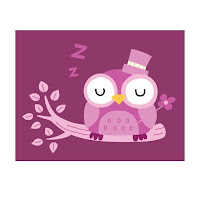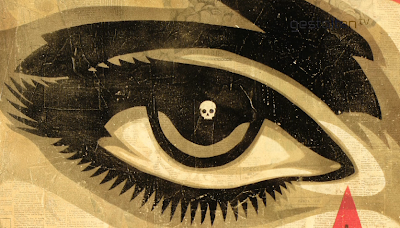Design Product; Investigation, identification and interpretation of the 'product'. It also considers the role and significance of the product in culture and society. The student considers the ways in which people give meaing to products as objects of contemplation or as objects of function. Reference is also made to ecological design and materials sustainability.
- Select and compare/contrast FOUR products by FOUR different comtemporary illustrators, either four childrens' books by different illustrators, or four editorial illustrations by different illustrators or four advertising or four design illustrations (1200 words total)
Childrens' Books
I decided to compare and contrast children's book illustrators due to the fact that my previous brief at university was to write and illustrate a children's book of my own. Therefore I searched numerous illustrators until I found four children's book illustrators whose style appealed to me. I also chose children's books because I wanted to expand my knowledge of this aspect of design due to the fact that I've never explored it before. After looking through many contemporary illustrators, the four which stood out to me the most were; Oliver Jeffers, Lucy Richards, Laila Hills and Anette Heiberg.
Oliver Jeffers Lucy Richards
Laila Hills Anette Heiberg
Initially I chose these illustrators due to the fact that I admire their work individually even though they all look quite similar. They each have their particular styles, however when comparing them to each other there are some stylistic similarities. I have chosen these illustrations in particular because they all contain characters, either human or animals. I found this to be most appropriate because I'm currently developing a character for my own children's book which I feel needs to be developed.


Oliver Jeffers is one of few children's book illustrators that I'm familiar with. I admire the fact that he also writes his own books (as he is the only illustrator I've chosen who is both an author and illustrator), I feel this allows him to imagine each scene, creating personalisation to which he can illustrate them beautifully. All his stories spring from sense of humour and random situations and his illustrations are just as loose and quirky. Jeffers' characters are drawn with a minimalist approach, yet you still feel emotion through the composition and movements of the characters. Facial features are rather plain which adds a simplicity which I feel is part of the attraction. The rest of Jeffer's artwork can also be seen as childlike, because he uses minimal details to illustrate, particularly with the characters. In most of his books Jeffers restricts himself mainly to watercolours, working into a plain white background, which adds a border and also to his style. I think his use of watercolour techniques capture the scene and characters beautifully and through exploration each of his books are unique in their own way. I feel Jeffers particularly experimented within 'The Incredible Book Eating Boy'. In this book there's a lot of collage, with drawings made onto all sorts of paper which I find most interesting as it relates to my own style. What sets Jeffers apart from other illustrators that I've chosen is that he's extended his work beyond just picture books. Due to changing technologies, many of his stories have been turned into animated films and interactive picture books, where Jeffers' illustrations are brought to life, which I think captivates and engages the child reader. I also feel that by producing his stories in different formats, he can sell his product to a wide variety of young and older children.


Another author that I know of who has also adapted to the change in technology is Julia Donaldson. In this review I've chosen Lucy Richards (who has illustrated some of Julia Donaldsons' books alongside Axel Sheffler, Nick Sharratt and Lydia Monks), as I feel her paint studies really capture characterisation and her vibrant colours attract the audience. In the same sense as Oliver Jeffers, her characters are quite minimalist when it comes to detail. However I feel even though she only uses loose drawing techniques, the facial features within her work (also like Oliver Jeffers' characters) add personalities to the studies and even a small detail such as a smile can achieve an emotion within the character, which I feel a child would relate to. I also feel the movement and positioning of her characters are quite playful which is relevant to the format of her work. Lucy Richards has some similarites to Oliver Jeffers also including the media she works with. Even though Richards' restricts herself to using mainly watercolour and acrylic, her vibrant studies of natural environments and characters are beautiful to look at and I believe they would attract the targeted audience as well as be admired by older readers. One strength I found within Lucy Richards work when compared to Oliver Jeffers is that she creates an entire scene quite realistically, whereas Jeffers' studies are minimal in the sense of detail. However I believe that both styles are unique to both illustrators.


Laila Hills is a UK based illustrator, whose background in graphic design helped develop her love for characters and children's book illustration. I feel her work is rather similar to the studies of Lucy Richards, particularly when regarding colour schemes. Laila Hills uses vibrant colours within her work which I feel are playful and eye catching for the child reader. It was also her playfulness within her quirky drawings of animals that I found most appealing. I was particularly attracted to the off-set proportions of her characters features, which sets her apart from the previous two illustrators. Even though Laila Hills is also quite minimalist when it comes to shapes, I feel the colours are the focus of her work and not only are they used to make the study attractive but they also set the scene. When compared to Jeffers and Richards, Hills also uses minimal facial features, however each illustrator captures emotion within their characters. Hills in particular captures emotion within the eyes of the characters, whereas Jeffers and Richards mainly use the mouth to create different emotions. This is an aspect that I want to achieve within my own children's book, and due to this brief being a whole new experience for me, I think by exploring these illustrators I can also adapt my own style and characters to create more personality.

My fourth and final children's book illustrator is Anette Heiberg. Firstly, when compared to Jeffers, Richards and Hills, Anette Heiberg also relys on colour to create her studies, which I think work quite successfully. She also uses minimalist facial features, which are similar to that of Eric Hill (Spot The Dog), however I believe that Heiberg needs to rely more on the mouth of the character because it adds more personality (as seen in the third image across). Also like Laila Hills, Heiberg uses colour intead of drawing to set the scene within these illustrations. Even though her studies are rather simple, I believe children of younger ages will be able to recognise what the animals are and this also provides a learning process. Within other illustrations of Heiberg's she also uses collaging techniques, which are cut realistically to create her characters. I feel this adds creativity to her work and sets her apart from the other illustrators.
Overall I feel there were many similarities between all the illustrators, however their own style of drawing and creating studies set them apart from each other. I believe all the illustrators attract the child reader in numerous ways; mainly due to colour however I feel Oliver Jeffers in particular uses his imagination and sense of humour to engage the reader through his writing as well as his illustrations. However Richards, Hills and Heiberg have vibrant illustrations which are eye catching and attractive, which is appropriate for the format. My own personal feelings have changed towards children's book illustration. After writing and attempting my own book, I feel I have a good foundation to develop my character building, either due to facial features or positioning of characters. The main similarity between my work and my selected illustrators is the use of colour, whether to set the scene or create personality for the character.
Word Count; 1,269.


























































